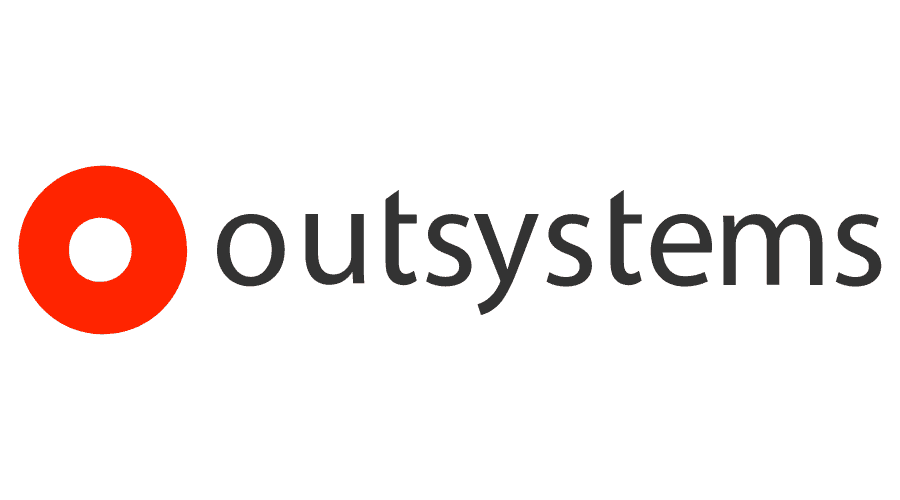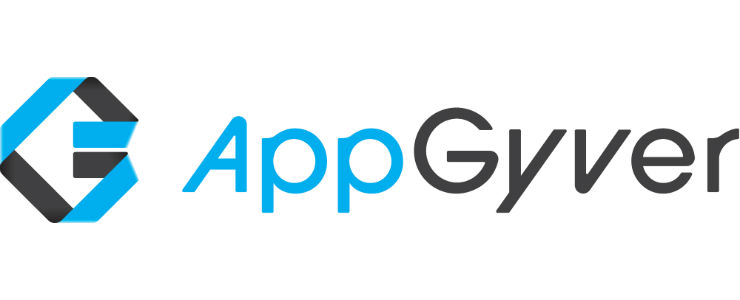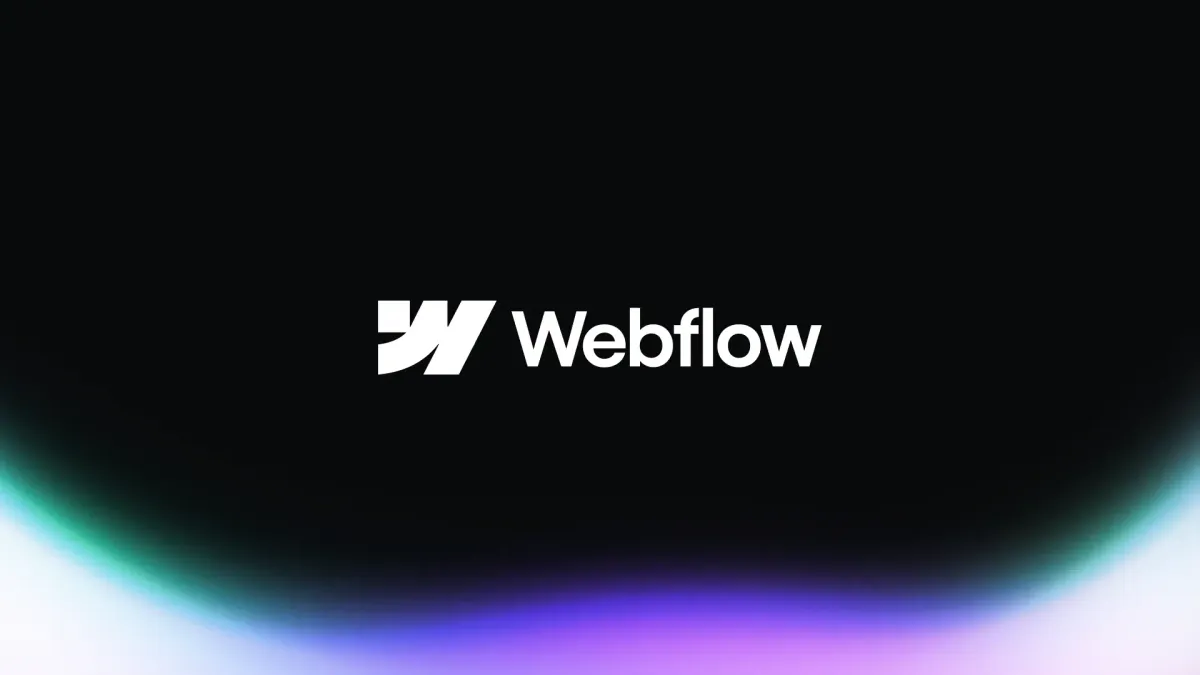---Contents---
- Revolutionize Your Business with No-Code App Development
- What Are No-Code App Creators? The Future of App Development
- The Top 10 No-Code App Creators of 2025: Detailed Breakdown
- 1. Bubble: The All-In-One Web App Powerhouse
- 2. Adalo: Superior Mobile App Development
- 3. Glide: Spreadsheet-Powered App Magic
- 4. OutSystems: Enterprise-Grade No-Code Development
- 5. Thunkable: Cross-Platform Mobile Excellence
- 6. AppGyver (SAP Build Apps): Professional-Grade No-Code
- 7. Bravo Studio: Design-to-App Transformation
- 8. Webflow: Web Design Meets Application Building
- How to Choose the Right No-Code App Creator for Your Project
- Launching Your No-Code App: Strategies for Success
- The Future of No-Code Development: What’s Next?
- Conclusion: Embracing the No-Code Revolution
- Frequently Asked Questions About No-Code App Creators
- Can no-code apps handle high user volumes?
- How secure are applications built with no-code platforms?
- Can I export my app if I decide to move to custom code later?
- Do no-code apps work offline?
- Are no-code platforms suitable for complex business logic?
- What technical skills are helpful when using no-code platforms?
Revolutionize Your Business with No-Code App Development
Have you ever had a brilliant app idea but lacked the technical skills to bring it to life? You’re not alone. Countless entrepreneurs and business leaders have faced this exact hurdle. But today, the rules have changed dramatically thanks to the no-code revolution.
No-code app creators are transforming the digital landscape by democratizing app development. These powerful platforms allow anyone to build sophisticated applications without writing a single line of code. Whether you’re a solopreneur with a game-changing idea or an enterprise team looking to streamline operations, no-code tools can help you build functional, professional apps in a fraction of the time and cost of traditional development.
In this comprehensive guide, we’ll explore:
- What exactly no-code app creators are and why they’re gaining massive popularity
- The top 10 no-code platforms dominating the market in 2025
- How to choose the perfect no-code tool for your specific needs
- Actionable strategies to launch a successful no-code app
- The future of app development in the no-code era
Let’s dive in and discover how these revolutionary tools can transform your ideas into reality!
What Are No-Code App Creators? The Future of App Development
No-code app creators are development platforms that enable users to design, build, and deploy fully functional applications using visual interfaces instead of traditional programming. Think of them as sophisticated digital construction kits where you can assemble complex applications using pre-built components, intuitive drag-and-drop editors, and visual workflow builders.
Why No-Code Platforms Are Transforming the Digital Landscape
The emergence of no-code tools represents one of the most significant shifts in software development since the advent of the internet. Here’s why they’re becoming essential tools for modern businesses:
1. Unprecedented Speed to Market
Traditional app development typically takes months or even years. With no-code platforms, you can build and launch functional applications in days or weeks. This dramatic acceleration gives entrepreneurs and businesses a critical competitive advantage in today’s fast-paced digital economy.
According to Forrester Research, organizations using no-code development platforms can reduce their app development time by up to 70%.
2. Dramatic Cost Reduction
Hiring professional developers is expensive, with costs easily running into six figures for even moderate-complexity applications. No-code platforms drastically reduce these expenses, making app development accessible to bootstrapped startups and small businesses with limited budgets.
3. Empowerment of Non-Technical Teams
No-code platforms shift app development capabilities from technical specialists to the people who understand business problems best. Marketing teams can create customer-facing apps, operations staff can build workflow tools, and entrepreneurs can validate ideas without technical dependencies.
4. Continuous Iteration and Improvement
Unlike traditional coding where changes can be complex and risky, no-code platforms make updates and improvements remarkably simple. This agility enables businesses to respond quickly to user feedback and evolving market demands.
As Harvard Business Review noted in a recent article, “No-code development platforms are helping organizations meet the demands of accelerated digitization by enabling rapid application development and deployment.”
The Top 10 No-Code App Creators of 2025: Detailed Breakdown
The no-code landscape is evolving rapidly, with platforms constantly enhancing their capabilities. Here’s our curated list of the most powerful and versatile no-code app creators dominating the market in 2025:
1. Bubble: The All-In-One Web App Powerhouse

Website: Bubble.io
Bubble stands as the undisputed leader in web application development without code. Its comprehensive feature set and remarkable flexibility make it suitable for building everything from simple landing pages to complex marketplace platforms and SaaS products.
Standout Features:
- Powerful Visual Editor: Create sophisticated interfaces with pixel-perfect control
- Robust Database Management: Design complex data structures with relational capabilities
- Advanced Logic Workflows: Implement business logic through visual programming
- Extensive Plugin Ecosystem: Extend functionality with hundreds of community and official plugins
- API Connector: Integrate with virtually any third-party service
Pricing:
- Free Plan: Available for learning and basic projects
- Personal Plan: $29/month (billed annually)
- Professional Plan: $119/month (billed annually)
- Production Plan: $529/month (billed annually)
Ideal For:
SaaS startups, online marketplaces, CRM systems, membership platforms, and any complex web application.
Expert Insight: “Bubble represents the most complete no-code ecosystem for web applications, offering nearly limitless possibilities for entrepreneurs without technical backgrounds.” – Sarah Johnson, No-Code Development Expert at NoCodeJourney
2. Adalo: Superior Mobile App Development

Website: Adalo.com
Adalo has established itself as the premier platform for creating native mobile applications without coding. Its intuitive interface combined with powerful functionality makes it the top choice for entrepreneurs focused on mobile-first experiences.
Standout Features:
- Native App Creation: Build apps that feel genuinely native on both iOS and Android
- Component Marketplace: Access pre-built components to accelerate development
- Relational Database: Create complex data relationships with ease
- Action Workflows: Define sophisticated user interactions and app behaviors
- Direct Publishing: Deploy directly to Apple App Store and Google Play
Pricing:
- Free Plan: Available for testing and learning
- Pro Plan: $45/month (billed annually)
- Business Plan: $125/month (billed annually)
- Enterprise: Custom pricing
Ideal For:
Mobile-focused startups, entrepreneur MVPs, on-demand service apps, and community platforms.
3. Glide: Spreadsheet-Powered App Magic

Website: Glideapps.com
Glide transforms Google Sheets and Excel spreadsheets into beautiful, functional applications with remarkable simplicity. Its unique approach makes it ideal for data-centric applications and internal tools.
Standout Features:
- Spreadsheet Integration: Build directly from your existing data
- Components Library: Beautiful UI elements for rapid assembly
- Advanced Filtering: Create dynamic views of your data
- User Authentication: Control access with multiple permission levels
- Offline Functionality: Apps work even without internet connection
Pricing:
- Free Plan: Available with Glide branding
- Basic Plan: $25/month
- Pro Plan: $99/month
- Business Plan: $249/month
Ideal For:
Internal tools, inventory management, field service applications, client portals, and data collection apps.
4. OutSystems: Enterprise-Grade No-Code Development

Website: OutSystems.com
OutSystems delivers industrial-strength no-code/low-code capabilities designed for enterprise environments where scale, security, and compliance are non-negotiable.
Standout Features:
- AI-Assisted Development: Intelligent recommendations accelerate building
- Enterprise Integration: Connect to legacy systems and databases
- Sophisticated Architecture: Support for microservices and scalable applications
- DevOps Automation: Built-in CI/CD pipeline capabilities
- Performance Monitoring: Real-time analytics on application performance
Pricing:
- Custom enterprise pricing based on requirements
- Free trial available
Ideal For:
Enterprise applications, digital transformation initiatives, mission-critical systems, and large-scale deployments.
5. Thunkable: Cross-Platform Mobile Excellence

Website: Thunkable.com
Thunkable enables the creation of sophisticated cross-platform mobile applications with an accessible drag-and-drop interface that doesn’t sacrifice power or flexibility.
Standout Features:
- Cross-Platform Building: One design works for both iOS and Android
- Real-Time Testing: Instant preview on actual devices
- Block-Based Logic: Intuitive visual programming model
- Custom Component Creation: Build reusable elements
- Extensive API Support: Connect to external services and data sources
Pricing:
- Free Plan: Available with limitations
- Pro Plan: $13/month (billed annually)
- Business Plan: $38/month (billed annually)
Ideal For:
Educational projects, prototypes, cross-platform mobile apps, and developer productivity.
6. AppGyver (SAP Build Apps): Professional-Grade No-Code

Website: AppGyver.com
Now part of SAP’s suite of tools, AppGyver offers enterprise-level capabilities with a surprisingly accessible interface, bridging the gap between professional development and no-code simplicity.
Standout Features:
- Logic Components: Create sophisticated business logic visually
- Formula Editor: Excel-like formulas for data manipulation
- Custom UI Creation: Design unique interfaces beyond templates
- Deep Logic Capability: Support for complex conditional operations
- SAP Integration: Seamless connection with SAP systems (if needed)
Pricing:
- Free for individual developers and small businesses
- Enterprise pricing available through SAP
Ideal For:
Professional developers exploring no-code, data-intensive applications, and SAP ecosystem integrations.
7. Bravo Studio: Design-to-App Transformation

Website: BravoStudio.app
Bravo Studio revolutionizes the app development workflow by turning Figma designs directly into functional mobile applications, creating a seamless bridge between designers and app functionality.
Standout Features:
- Figma Integration: Convert designs directly to working apps
- No Design Limitations: Freedom to create any visual experience
- API Connections: Link to real backend services
- Native Components: Access device features like camera and GPS
- Design-Development Synchronization: Changes in Figma reflect in the app
Pricing:
- Free Plan: Available for learning
- Starter Plan: $19/month (billed annually)
- Pro Plan: $49/month (billed annually)
Ideal For:
Design agencies, UI/UX professionals, startups with strong design focus, and rapid prototyping.
8. Webflow: Web Design Meets Application Building

Website: Webflow.com
While primarily known for website building, Webflow’s powerful CMS capabilities and custom code integration options make it a formidable no-code platform for content-driven applications and ecommerce experiences.
Standout Features:
- Professional Design Tools: Precise control over every visual aspect
- CMS Collections: Create structured content with relationships
- Logic and Conditions: Dynamic content display based on user actions
- Ecommerce Functionality: Built-in shopping and payment processing
- Animations and Interactions: Create engaging user experiences
Pricing:
- Free Plan: Available for learning
- Basic Site Plan: $14/month (billed annually)
- CMS Site Plan: $23/month (billed annually)
- Business Plan: $39/month (billed annually)
- Ecommerce Plans: Starting at $29/month (billed annually)
Ideal For:
Content-rich applications, marketing sites with app functionality, ecommerce platforms, and portfolio sites.
How to Choose the Right No-Code App Creator for Your Project
With so many excellent platforms available, selecting the right one for your specific needs can be challenging. Here’s a systematic approach to finding your perfect match:
Step 1: Define Your App Requirements
Before exploring platforms, clearly define:
- App Type: Mobile, web, or both?
- Core Functionality: What essential features must your app include?
- Data Complexity: Simple forms or complex relational data?
- Integration Needs: Which external systems must connect to your app?
- User Experience: Basic functionality or sophisticated interactions?
Step 2: Consider Your Technical Comfort Level
No-code platforms vary in complexity:
- Beginner-Friendly: Glide, Kodular
- Moderate Learning Curve: Adalo, Webflow, Thunkable
- More Complex: Bubble, OutSystems, AppGyver
Step 3: Evaluate Your Budget Constraints
Be realistic about your investment capacity:
- Bootstrap Budget: Look for platforms with robust free tiers or low-cost options
- Funded Startup: Middle-tier plans with growth capabilities
- Enterprise: Solutions with scalability, security, and support
Step 4: Assess Long-Term Scalability
Consider your growth trajectory:
- Will the platform support increasing users?
- Can it handle expanding data requirements?
- Are there performance limitations?
- What are the cost implications as you scale?
Step 5: Test Before Committing
Most platforms offer free trials or free tiers:
- Build a simple prototype on your top 2-3 choices
- Evaluate the development experience
- Test the resulting application performance
- Assess the quality of platform documentation and support
According to TechCrunch, “The most successful no-code implementations come from matching the right platform to specific business requirements rather than forcing a project to fit within a platform’s limitations.”
Launching Your No-Code App: Strategies for Success
Building your app is just the beginning. Here’s how to ensure your no-code creation thrives in the market:
1. Start With a Focused MVP
Resist the temptation to include every feature at launch:
- Identify Your Core Value Proposition: What one problem does your app solve exceptionally well?
- Ruthlessly Prioritize Features: Include only what’s essential for delivering that core value
- Design for Feedback: Build in mechanisms for collecting user input
- Plan Your Iteration Cycles: Schedule regular updates based on user feedback
2. Optimize Performance From Day One
No-code doesn’t mean sacrificing performance:
- Streamline Data Models: Create efficient relationships between data objects
- Minimize API Calls: Reduce unnecessary external connections
- Optimize Media Assets: Compress images and use appropriate file formats
- Implement Pagination: Limit data loading to what’s immediately necessary
- Test on Target Devices: Ensure smooth functioning on the devices your users actually use
3. Implement Robust Analytics
Data-driven improvement requires proper measurement:
- User Journey Tracking: Monitor how users navigate through your app
- Feature Utilization Analysis: Identify which capabilities are most valuable
- Performance Metrics: Monitor load times and response rates
- Conversion Funnels: Track completion rates for critical processes
- Retention Metrics: Measure ongoing engagement over time
Tools like Google Analytics or Mixpanel can be integrated with most no-code platforms.
4. Develop a Comprehensive Launch Strategy
Create momentum around your release:
- Pre-Launch Campaign: Build anticipation among your target audience
- Launch Day Promotion: Coordinate across multiple channels (social, email, PR)
- Early Adopter Program: Reward initial users with special benefits
- Feedback Collection Plan: Systematically gather and categorize user input
- Quick-Win Updates: Release improvements rapidly to show responsiveness
5. Leverage the No-Code Community
You’re not alone in your no-code journey:
- Join Platform-Specific Forums: Connect with experienced builders
- Participate in No-Code Communities: Groups like NoCode.tech or Reddit’s r/nocode
- Attend Virtual Meetups: Share experiences and solutions
- Follow No-Code Influencers: Stay current on trends and best practices
The Future of No-Code Development: What’s Next?
The no-code revolution is just beginning, with several exciting trends poised to reshape the landscape:
AI-Enhanced Development
Artificial intelligence is already being integrated into no-code platforms, offering:
- Intelligent Design Suggestions: AI-generated layout and styling recommendations
- Predictive Logic Building: Automated workflow suggestions based on common patterns
- Natural Language App Creation: Describing functionality in plain English
- Automated Testing: AI-driven quality assurance and bug detection
Expanded Enterprise Adoption
Major corporations are increasingly embracing no-code development:
- Citizen Developer Programs: Formal initiatives empowering non-technical staff
- IT-Governed No-Code Environments: Secure platforms with appropriate guardrails
- Legacy System Integration: Connecting no-code apps with established infrastructure
- Cross-Functional Development Teams: Blending professional developers with no-code builders
Research by Gartner suggests that by 2026, 70% of enterprise applications will be developed using no-code or low-code technologies.
Specialized Industry Solutions
No-code platforms are evolving to address specific sector needs:
- Healthcare-Specific Platforms: HIPAA-compliant with medical integrations
- Financial Services Solutions: Regulatory compliance and security features
- Education-Focused Tools: Learning management system capabilities
- Retail and E-commerce Specialization: Inventory and omnichannel features
Conclusion: Embracing the No-Code Revolution
The no-code movement represents more than just a technological shift—it’s a fundamental democratization of digital creation. By removing the technical barriers to app development, these platforms are unleashing a wave of innovation from previously sidelined creators.
Whether you’re an entrepreneur with a world-changing idea, a business leader seeking operational efficiency, or a creative professional exploring new digital frontiers, no-code app creators provide the tools to transform your vision into reality—without writing a single line of code.
The question is no longer whether you can build an app, but which one you’ll build first.
Ready to start your no-code journey? Choose a platform from our top 10 list, create your free account today, and begin building the app you’ve always imagined!
Frequently Asked Questions About No-Code App Creators
Can no-code apps handle high user volumes?
Yes, modern no-code platforms are increasingly capable of scaling to support substantial user bases. Enterprise-focused platforms like OutSystems and Bubble have successfully deployed applications serving millions of users. However, proper architecture and optimization remain essential for high-performance applications.
How secure are applications built with no-code platforms?
Leading no-code platforms implement robust security measures including data encryption, secure authentication, and regular security updates. Many platforms undergo SOC 2 compliance auditing and offer enterprise-grade security features. However, as with any application, security also depends on proper implementation of access controls and data handling practices.
Can I export my app if I decide to move to custom code later?
This varies significantly between platforms. Some, like Bubble, allow API access to your data but don’t provide direct code export. Others offer limited export capabilities or alternative transition paths. If potential migration is important, verify the specific export options before committing to a platform.
Do no-code apps work offline?
Many modern no-code platforms offer offline functionality, particularly for mobile applications. Platforms like Glide, Adalo, and AppSheet provide options for offline data collection and synchronization when connectivity returns.
Are no-code platforms suitable for complex business logic?
Increasingly, yes. Modern no-code platforms support sophisticated conditional logic, workflows, and automation capabilities. While extremely specialized algorithms might still require custom code, platforms like Bubble and OutSystems can handle complex business processes, approval workflows, and multi-stage operations.
What technical skills are helpful when using no-code platforms?
While programming knowledge isn’t required, understanding data structures, logical thinking, and basic UX design principles can significantly accelerate your no-code development process. Familiarity with concepts like databases, APIs, and conditional logic provides a strong foundation for effective no-code building.
Have you built an application using a no-code platform? Share your experience in the comments below!
Want to explore more cutting-edge AI solutions? Check out our comprehensive guide to the 10 Hottest AI Tools that are transforming business operations in 2025. These innovative tools complement the SEO solutions discussed in this article and can help take your digital strategy to the next level.




Pingback: Framer vs Webflow 2025: Which No-Code Builder Truly Dominates? - SaaSQuill
Pingback: 5 Great Startups Using Trae AI: Case Studies & Results - SaaSQuill